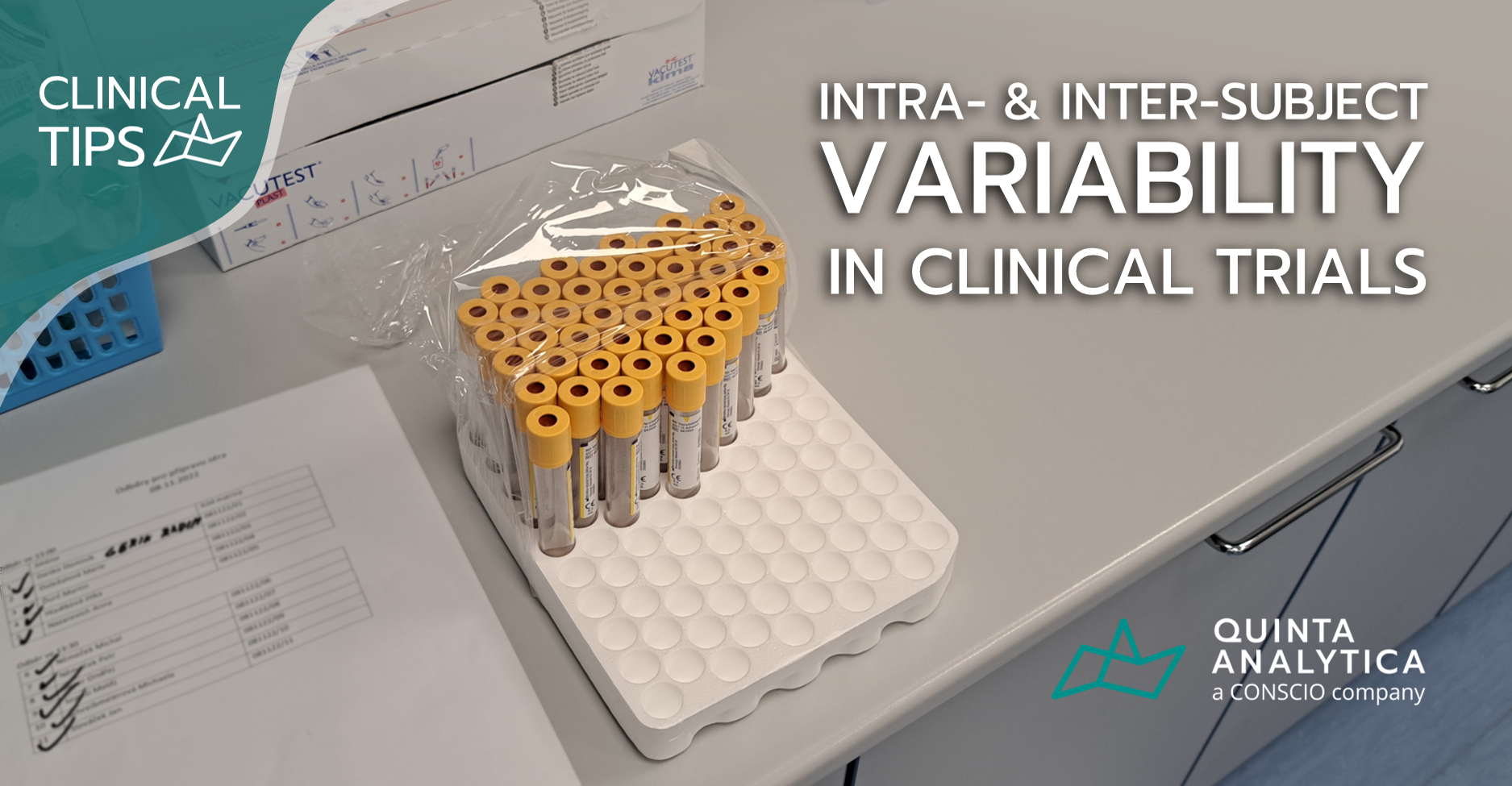
Following our Clinical Tips series, today we would like to introduce our readers to intra- and inter-subject variability; both of them are crucial concepts for the correct calculation of sample sizes in a clinical study design.
The pharmacokinetic properties of molecules under analysis are defined by different parameters, but when looking at the exact numbers obtained from volunteers participating in our clinical studies, we do observe variability across subjects. Let us take for example a half-life of 6 hours: It can be that the average is 6; with a minimum of 3.5 hours and a maximum of 8.7 hours. Even though all human beings share the same DNA, each of us has a unique metabolism and in terms of PK we call this inter-subject variability. Owing to this variability and even after the best standardization, it is impossible for two subjects to generate the same time concentration curve. In fact, even the same person will not have the same curve after repeated testing over time, even in the same conditions (meals, timing, activity, etc.). This second type of variability is called intra-subject variability.
In bioequivalence, we can account for inter-subject variability by using a cross-over design where subjects are used as their own control. In that context only intra-subject variability remains of interest, and it is established by our clinical experts via the statistical calculation of a parameter known as intra-subject coefficient of variation (ISCV). Factors that influence intra-subject variability can be, for instance, physicochemical properties of a given formulation such as pKa or oral bioavailability.
In order for our bioequivalence trial design to be statistically robust, sample size needs to be calculated based on reliable data about expected ISCV from the tested molecule as well as the reference product. The team of experts at Quinta’s in-house clinical unit can assist you through the entire clinical trial process, from the design of the study, sample size calculation, and all the way through pharmacokinetic and statistical evaluation.
For more information about our clinical research activities you may visit www.quinta.cz/clinical-testing, contact us at www.quinta.cz/cs/dobrovolnici or sales@quinta.cz.
Article by Tereza Korecká and Albert Pineda




